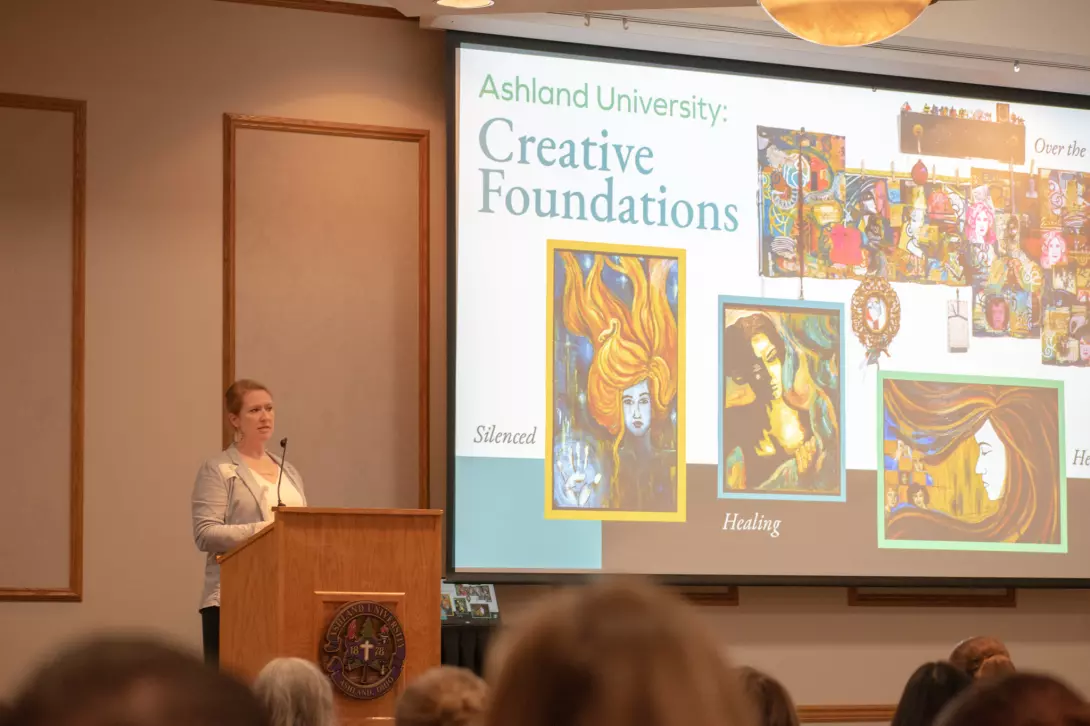
Students bring weeks, months and sometimes years of preparation into their URCA presentations
For every 12-minute oral presentation and hour or so answering questions about poster/exhibition projects at April 8’s Undergraduate Research and Creative Activity Symposium (URCA), the nearly 100 Ashland University students who presented spent many more hours, often months and, in some cases, years in preparation.
“As far as the time I've put into preparing for the exhibition, it has been all throughout my time here at AU,” said senior Mason Smith, who had an art exhibit, People and Spaces. “Beginning with the base-level art classes I was working with the concepts that I am still playing with in my paintings. What I learned in those foundational classes has translated into the work I do now.
“Last fall, I started many of the paintings that I am now exhibiting,” added Smith, an art education major. “The process of preparing is mostly time in the studio. I've tried to organize my interests and style so that I can more clearly communicate what my aim is with the paintings. I've talked with my professors and classmates a lot as well to help me refine and focus my work. Most of the preparation is taking hours at a time in the studio. This is when inspiration hits and my best work is made.”
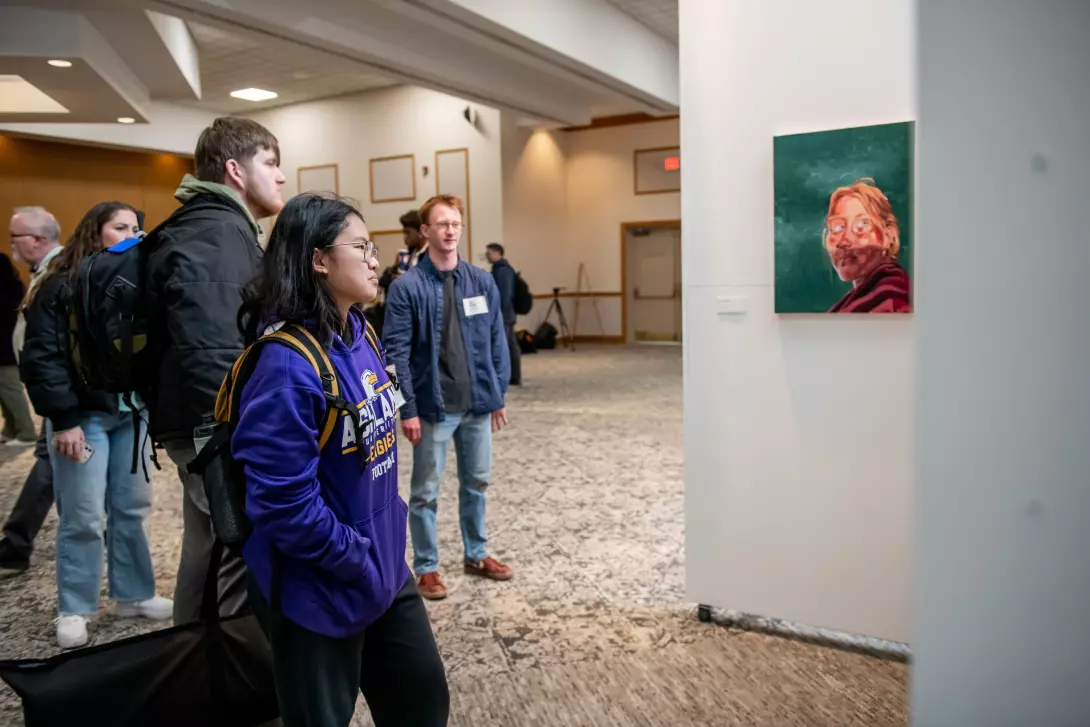
Art was one of about a dozen programs represented from the College of Arts and Sciences (CAS) at the 16th annual event that was open to the public in the John C. Myers Convocation Center.
The URCA Symposium is designed to give AU students the opportunity to enhance their educational experience by preparing them to present at professional conferences, author and/or co-author publications in journals and exhibit work in a variety of venues.
A number of biology and chemistry projects
Biology was a program that was well represented at URCA with 10 projects, including Maddison Dolenga and Delaney Frary, who had projects on zebrafish lens development and crape myrtle aphids, respectively, as well as Jaelyn Palmer, who had both an oral and poster presentation about crape myrtle aphids, small insects that feed exclusively on crape myrtle trees.
Like Smith, their presentations were the culmination of much of their time at AU:
- “Over the past two years, I have been working with Dr. Cynthia Perkovich on this project,” Palmer said. “The work is in collaboration with Tennessee State University and USDA. The goal of the research is to come up with the best solution to deterring pests from damaging crape myrtles. The crape myrtle is a vibrant floral plant that comes in trees or bushes. However, growers have trouble keeping aphids away from them. The damage leaves the plants unfavorable in greenhouses.”
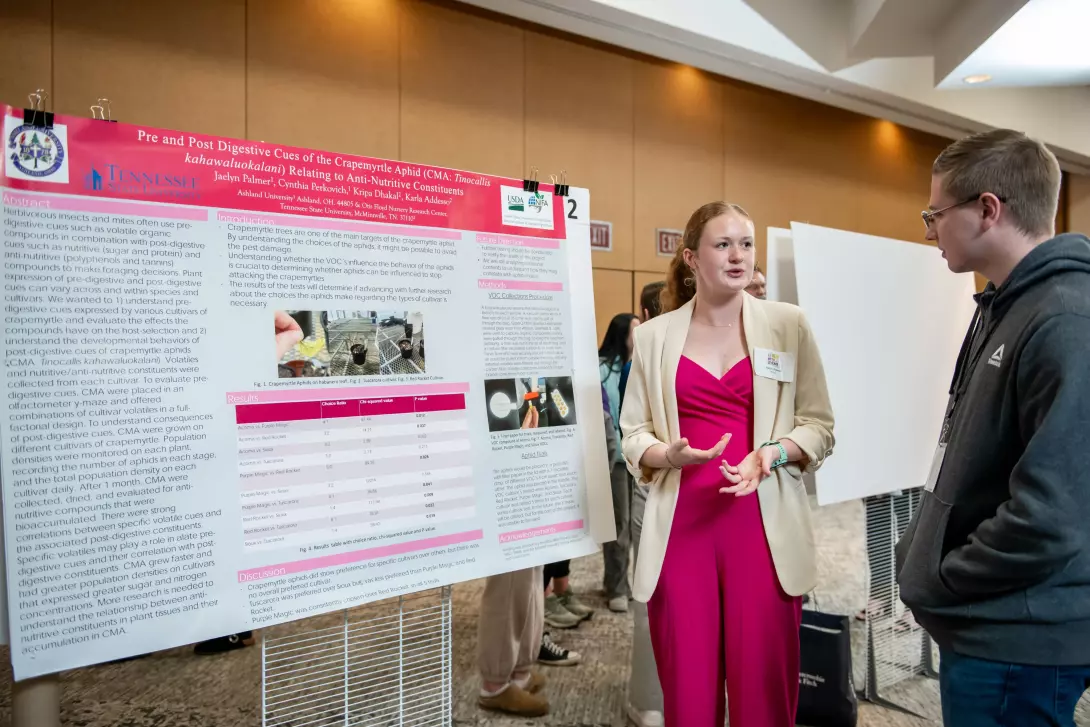
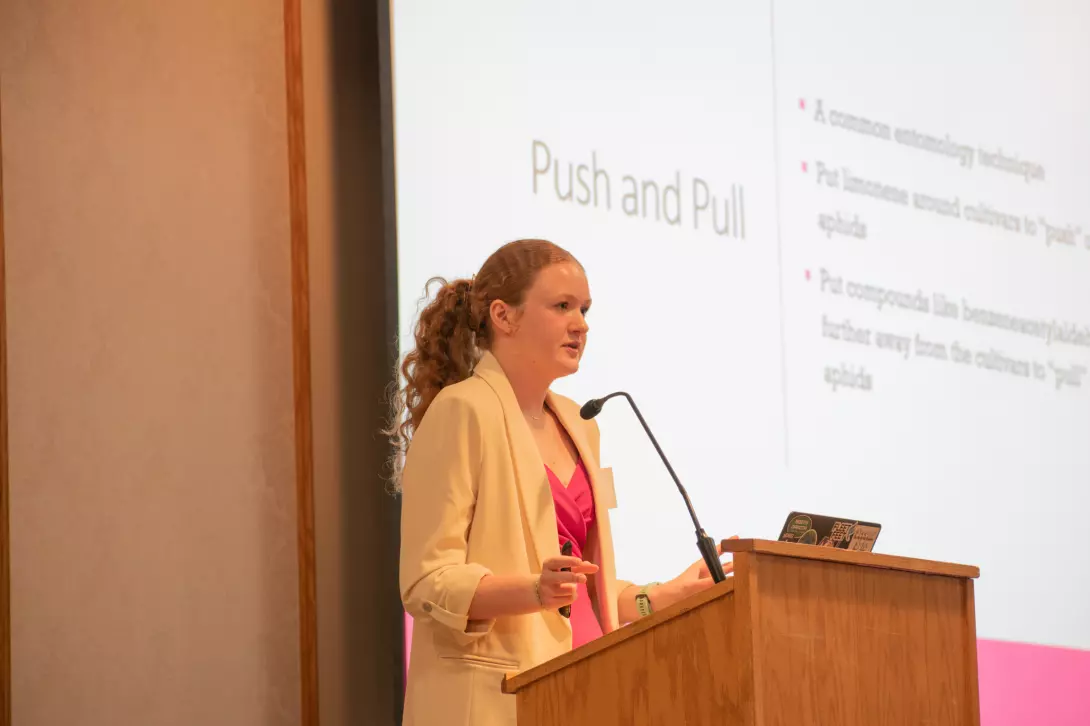
- “I started research with Dr. Mason Posner roughly 2 1/2 years ago,” said Dolenga, a senior whose next stop is medical school at LMU-DCOM in Knoxville, Tennessee. “What I presented is a culmination of the techniques and work I have done in that time period. I was able to present my work and won a presentation award at the OHZU conference, here at Ashland University, (in March). A portion of this work will also be presented at the ARVO meeting in Salt Lake City in May.”
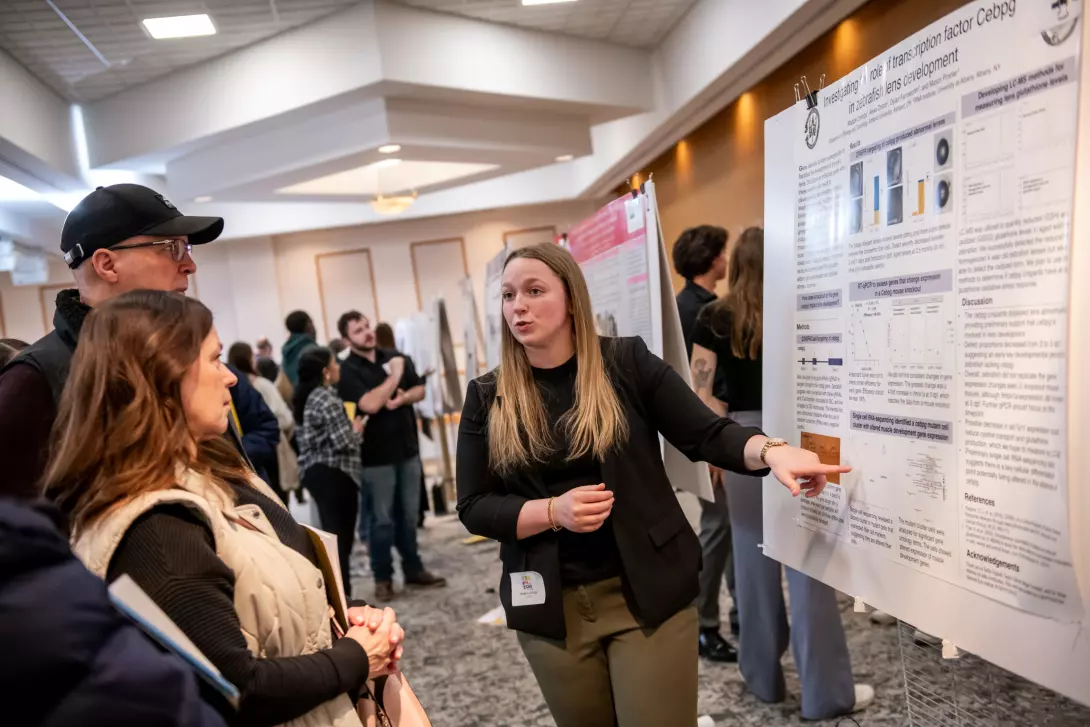
- “I began my contributions to this project in the summer of 2024 while Dr. (Cynthia) Perkovich, Melanie Eichler and I spent time in Dr. Perkovich's biology student research lab,” Frary said. “Working throughout the summer, we got the opportunity to spend a week researching at the Otis Floyd Nursery Research Center in McMinnville, Tennessee. This is where we collected samples and extra research tools, as well as where Dr. Perkovich's collogues reside and welcomed us. Dr. Perkovich and I have been continuing this research throughout the fall and spring semesters, and hope to wrap things up throughout the upcoming summer of 2025.”
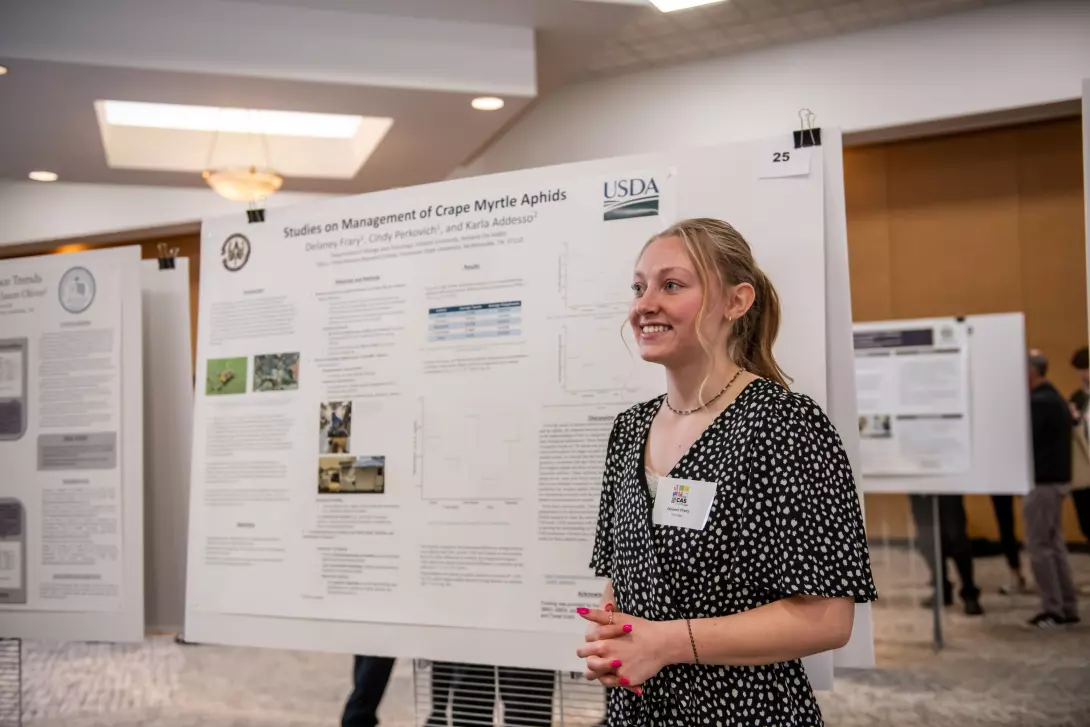
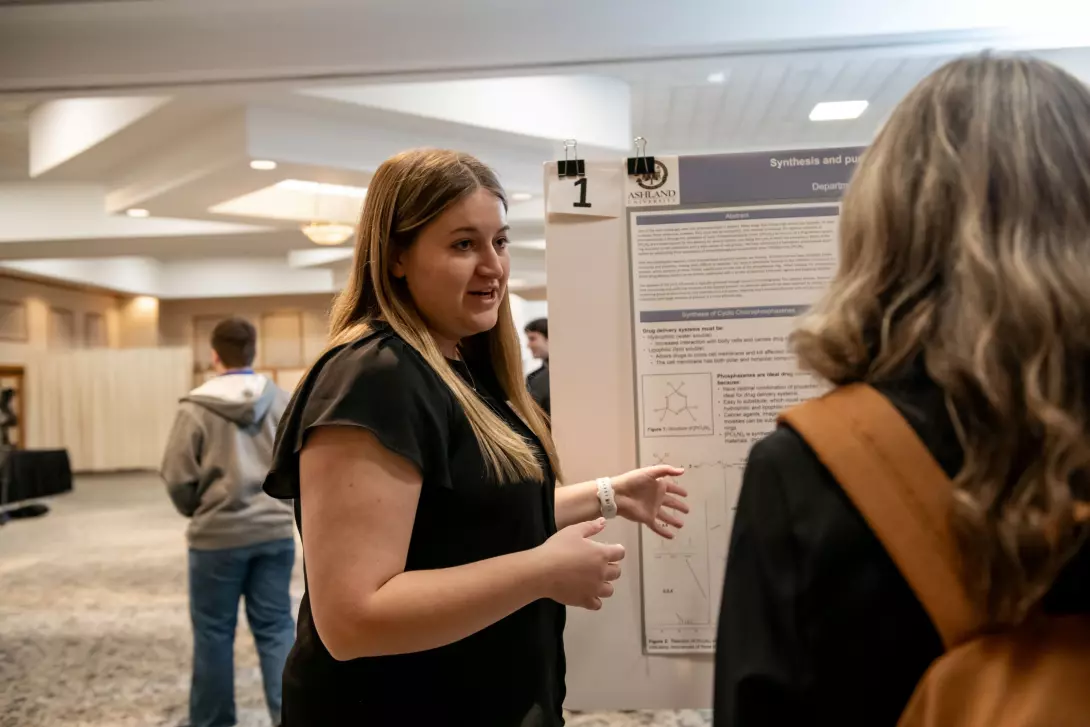
Eichler, a biochemistry major, also had an URCA chemistry poster project, with fellow biochemistry major Anna Ramsier, called Synthesis and Purification of a Phosphazene Drug Delivery System.
Eight other projects came from the chemistry program, with two also having a toxicology element.
Some of the chemistry projects included:
- Jaron Dibert’s project on the synthesis of a superconductor, which he said took about 10 hours of lab time, around three hours of poster writing and designing and approximately two hours of rehearsing his final presentation.
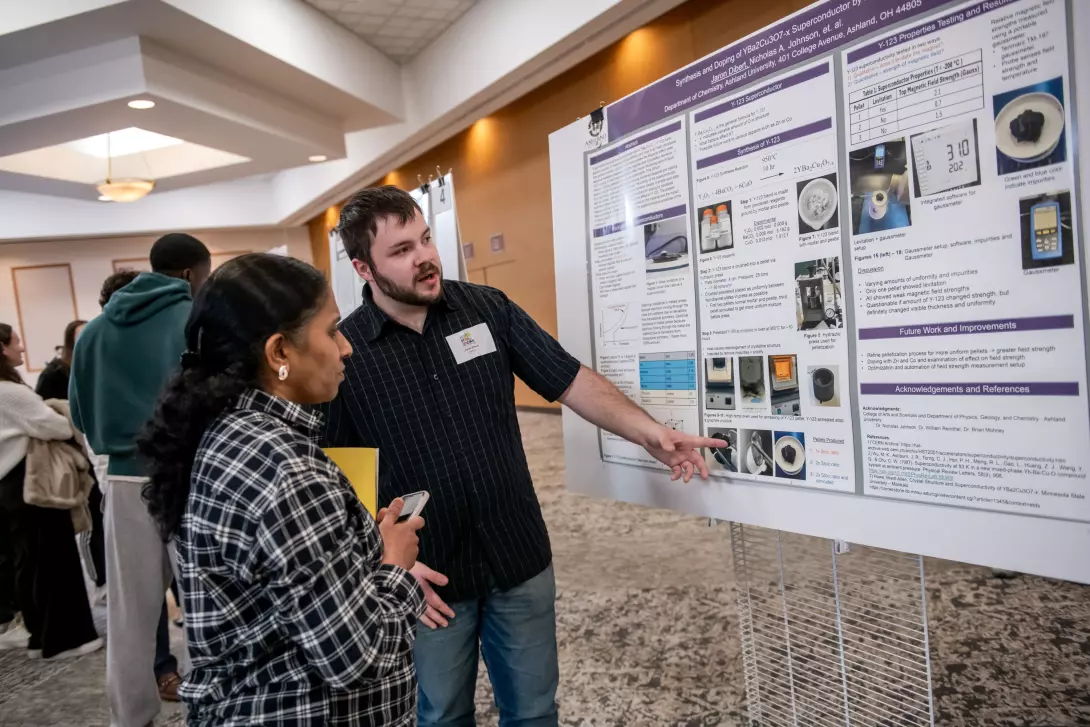
- Sebasitan Mathews’ research on synthesizing potential nicotine analog compounds for possible therapeutic and medicinal applications, which he said he spent three hours a day for the second half of the fall semester and then three hours a day for three days a week this semester, with about two weeks compiling his data and making its presentable for URCA. “I have had a lot of guidance from chemistry faculty members,” Mathews said. “They are all helpful, especially Dr. (Robert) Bergosh, under whose guidance I am doing my research.”
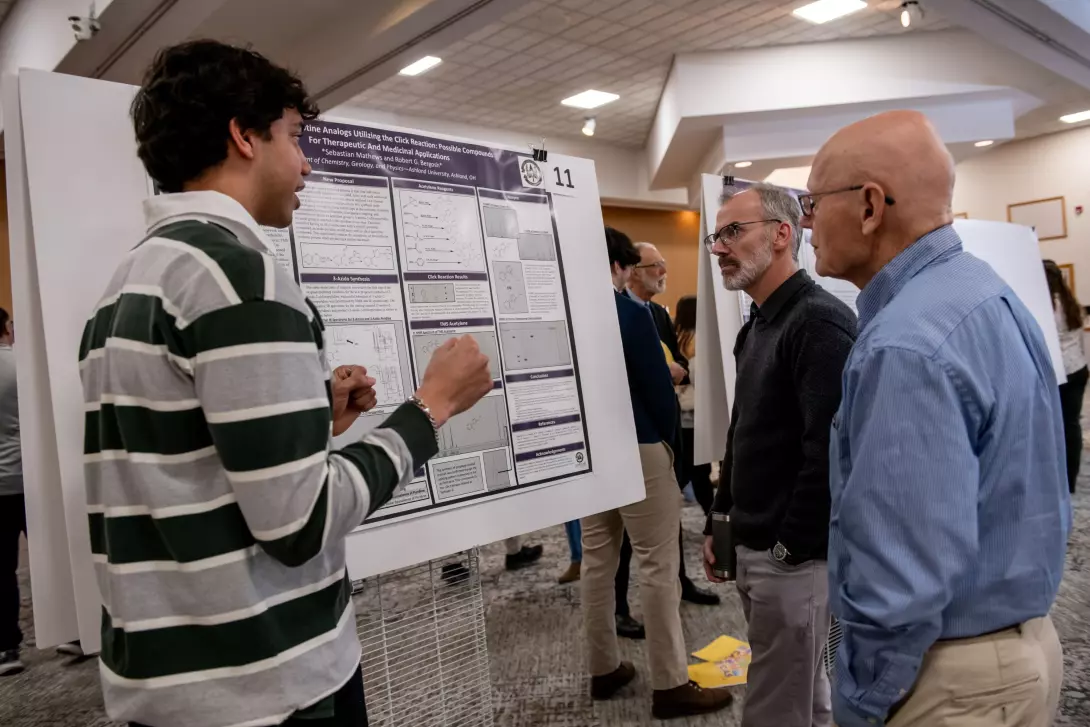
- And Sydney Vu’s Why are Red Cedars Invasive? “I have been working on this project for two years for about 3-4 hours a week,” Vu said. “The biggest preparation for me (for URCA) was getting practice presenting scientific posters in the quantitative analysis class that Ashland offers. I reached about 10 hours of lab time, around 3 hours of poster writing and designing, and 2 hours of rehearsing the final presentation for a grand total of about 15 hours of preparation.
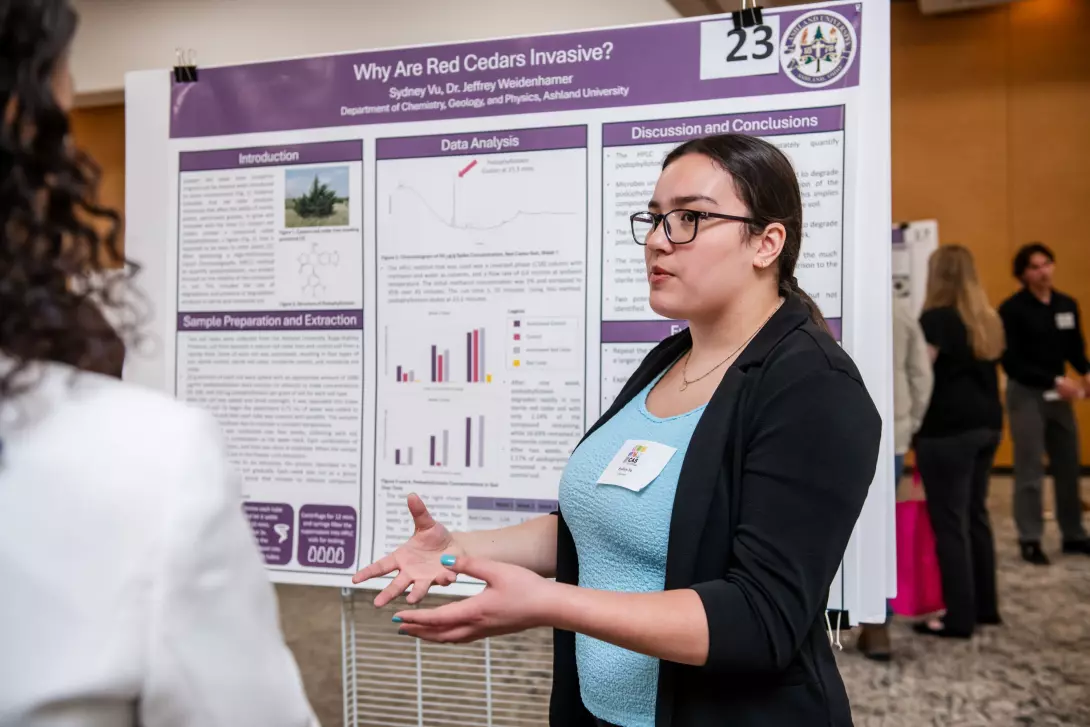
Psychology and computer science departments well represented
Another department with several projects was psychology with four, including Hannah McCrea’s presentation of a study she conducted in her advanced research methods class on a linguistic phenomenon called uptalk, which occurs when a speaker uses a rising intonation at the end of a declarative sentence.
McCrea said her faculty mentor, Christopher Chartier, Ph.D., whom she is a research assistant for, has helped her with this project the past several months, as well as suggestions from fellow lab partners.
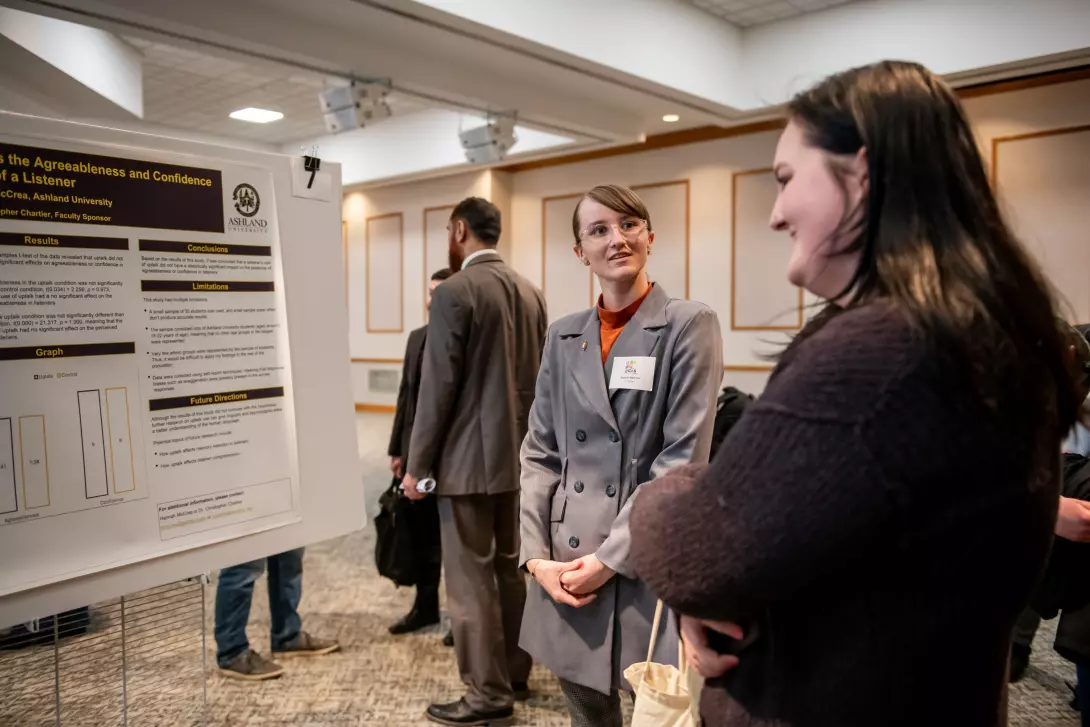
The program with the most projects was computer science with 15 of the nearly 60 projects presented at the all-day event – 17 if you include the two cybersecurity ones. That kept computer science students and faculty busy going between the Trustees Room and the Faculty Room trying to see as many of the 14 computer science/cybersecurity oral presentations, which were all in those two rooms, several at the same time. The poster presentations were in the Alumni Room.
Robert Pope had one of the two cybersecurity projects with an oral presentation about enhancing privacy technologies in health care, which was a semester-long case study he completed in the fall semester, in the Trustees Room, followed by a group project in the Faculty Room with Adam Harrington, Jeremiah McKee and Anthony Meier called Overview of a Modern-Day Weather App: RainCheck.
“I spent about two weeks preparing for my presentation,” Pope said about his health-care speech. “The main way I prepared was by visiting my professors frequently and revising my paper over and over to make sure I had all the information I wanted to present.”
Among other computer science/cybersecurity projects were Noah Marsh’s Shuffler: An Interactive Music Platform poster presentation, and Steven Short’s Assessment of Multi-Class Classification Models in Live Cirrhosis Stage Identification oral presentation.
“I have spent the entire semester so far working on this project, with the most time-consuming area being the database implementation,” Marsh said.
In preparation for his presentation, Short said he re-read source materials to refresh his knowledge of the subject matter and practiced/revised his presentation slides. “This is an accumulation of several weeks of work at 4-20 hours per week depending on the demands of my coursework.”
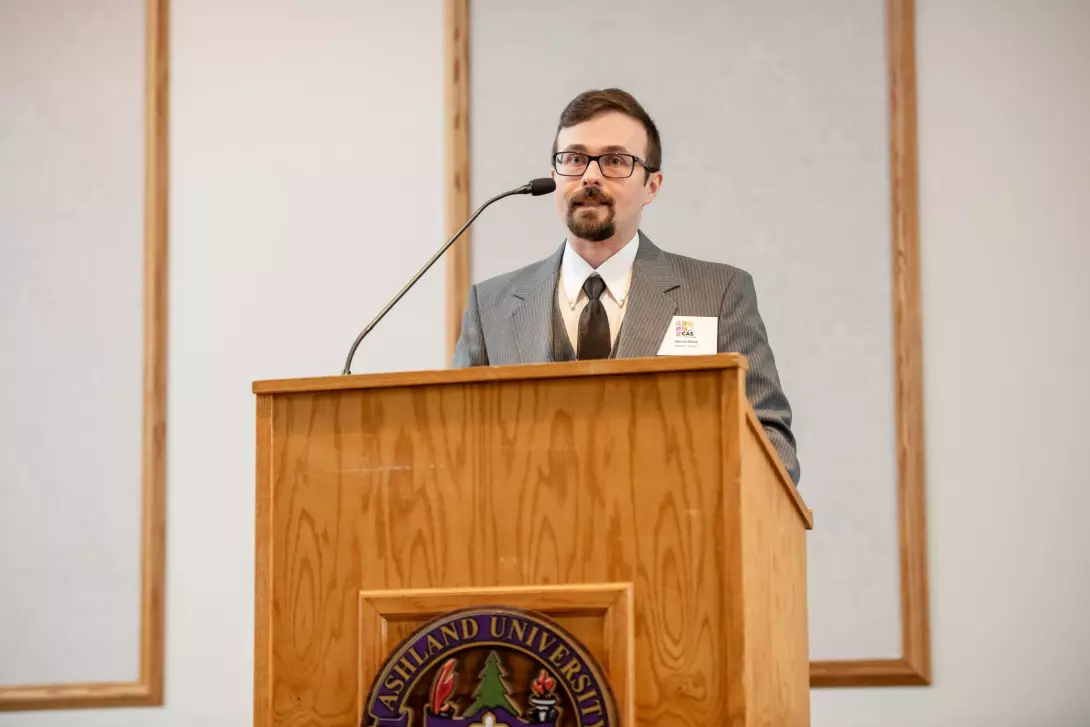
Many other students present, including a team of four from COBE
Programs with two projects were journalism and digital media production, communication studies, religion and history/political science, including these oral presentations:
- Political science minor Leanna Uselton’s gothic book, “Through Moss Covered Branches”
- Abigail Hassenzahl’s digital media production study into animation and film detailing how she developed a 20-minute animated pilot episode, “Assassin’s Secret,” for a fantasy TV series. Hassenzahl said she has been working on her project for about a year.
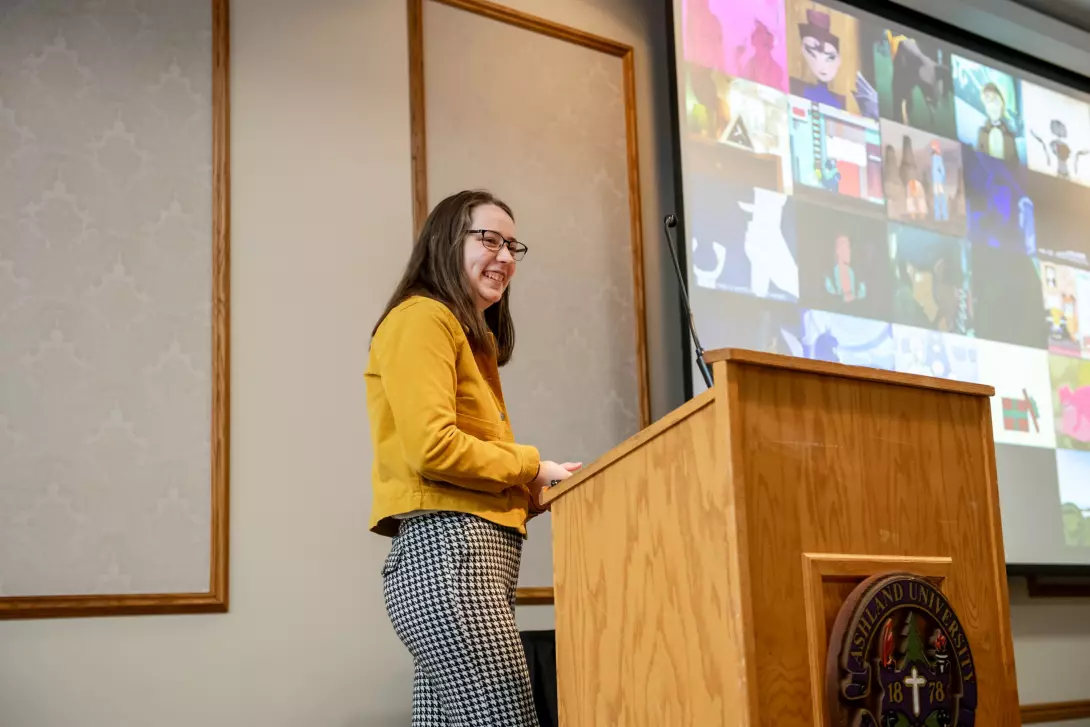
- And Katelyn Meeks participating in both of the Communication Studies presentations, her individual talk on “How College Students Reconcile the Use of Generative AI with Their Personal Ethical Principles” and group project, “A Public Relations Campaign for EveryLibrary,” with Mikayla Alcantar, Dana Krukoavska and Max Polianskyi.
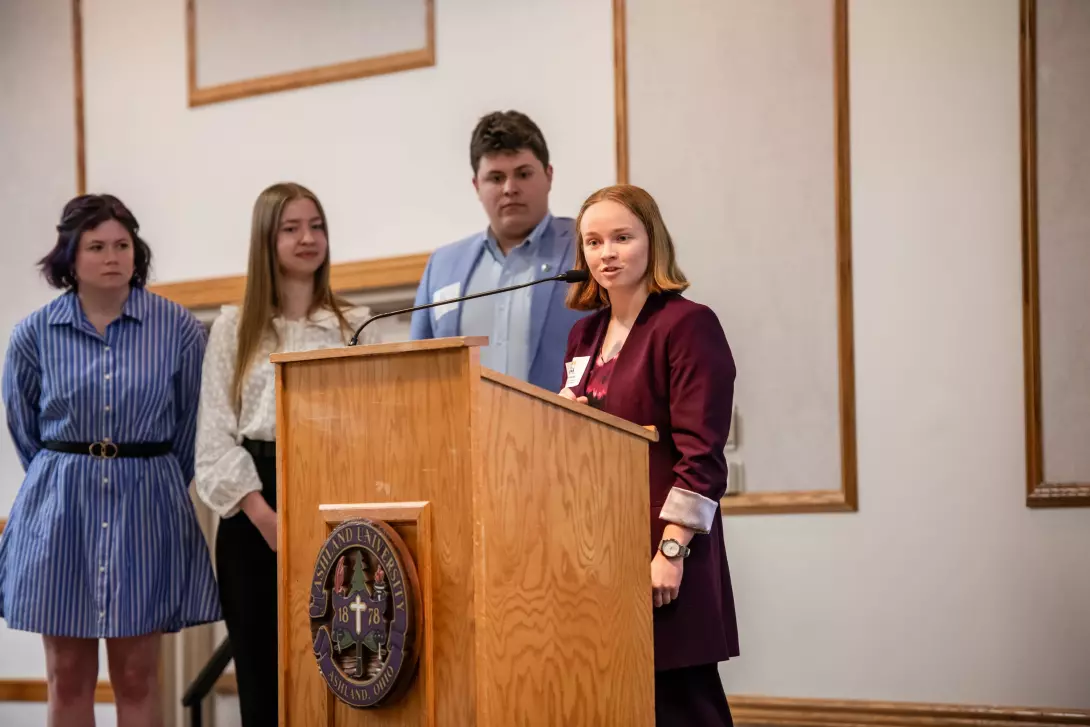
- One of the religion ones came from Josh Carpenter. It was titled Musical Midrash: The Passion Narrative and Jesus Christ Superstar.
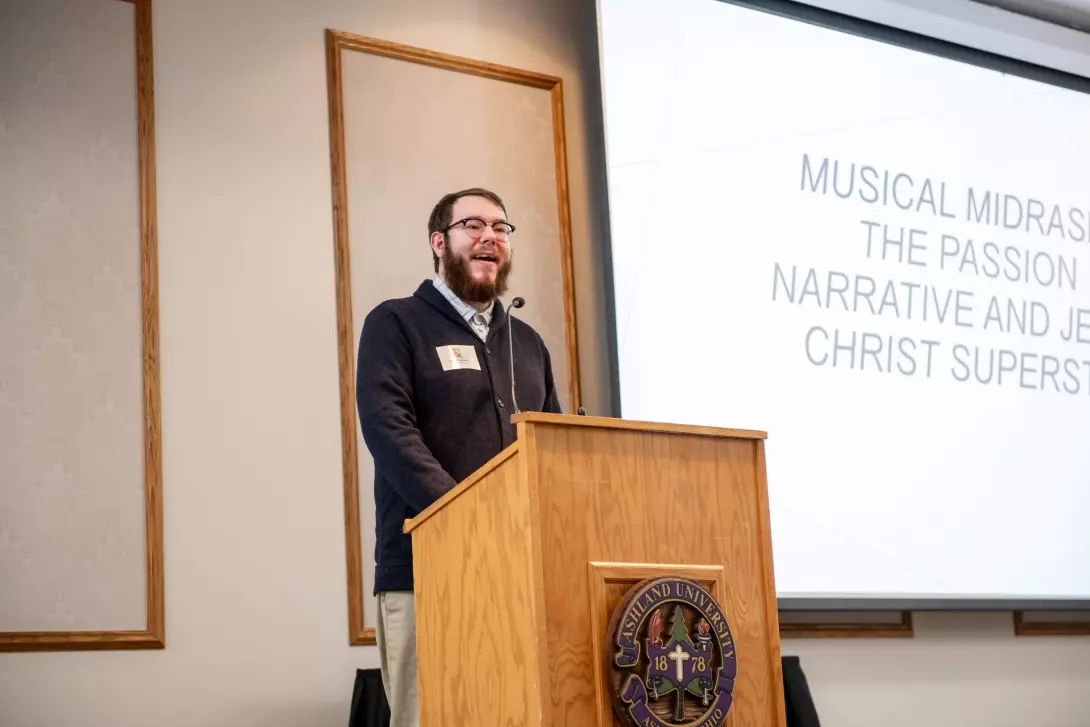
Mathematics, political science/history, languages/literature each had one project, as did criminal justice with Landen Gooley’s The Grate Ashland Serial Killer and English with Gabe Eckstein’s unit plan for teaching 12th-graders the significance of keeping Anne Frank’s “The Diary of a Young Girl” about the Holocaust alive through adaptations, using her diary as a focus.
Eckstein, who wants to eventually be an English teacher, said he spent several weeks preparing by meeting with his faculty advisor Maura Grady, Ph.D., capturing images and video from the Anne Frank House VR experience for his slideshow and practicing his presentation to different audiences for feedback.
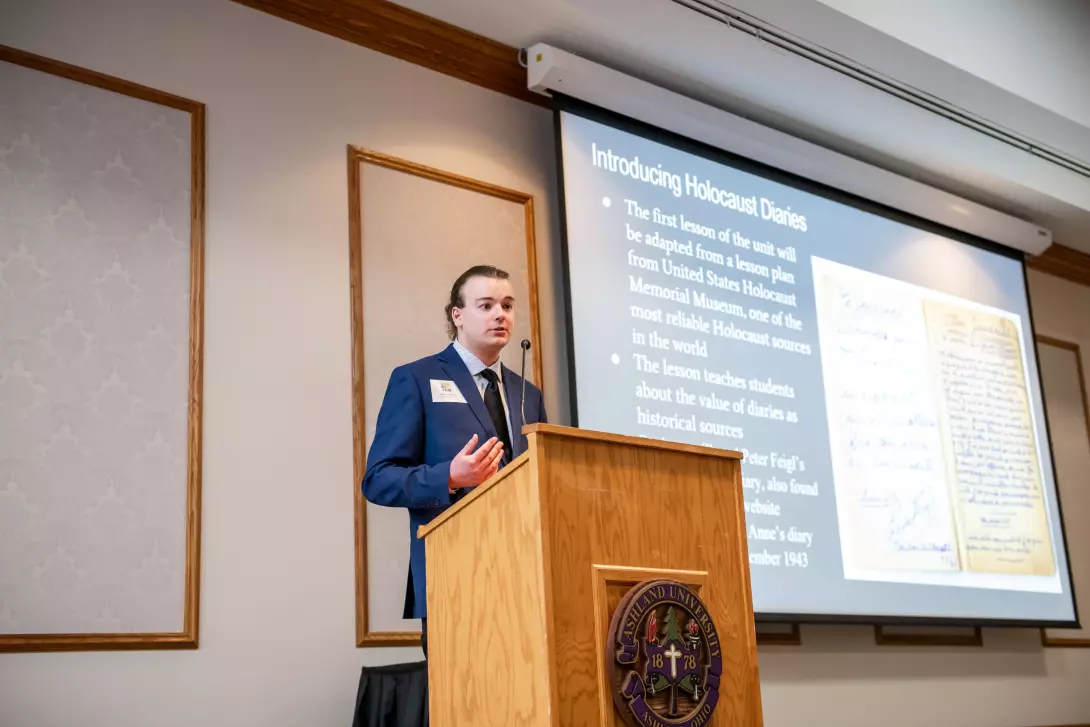
A large crowd in the Trustees Room listened to Gooley’s presentation, including AU Safety Services Director Kim Major, a former Ashland City Police Detective who helped bring about the conviction of the serial killer, Shawn Grate, who is on death row in Chillicothe, Ohio.
Gooley told the crowd she spent about two hours talking with Major about Grate and also read Major’s book about getting Grate to confess, “A Hunger to Kill” to prepare for her presentation.
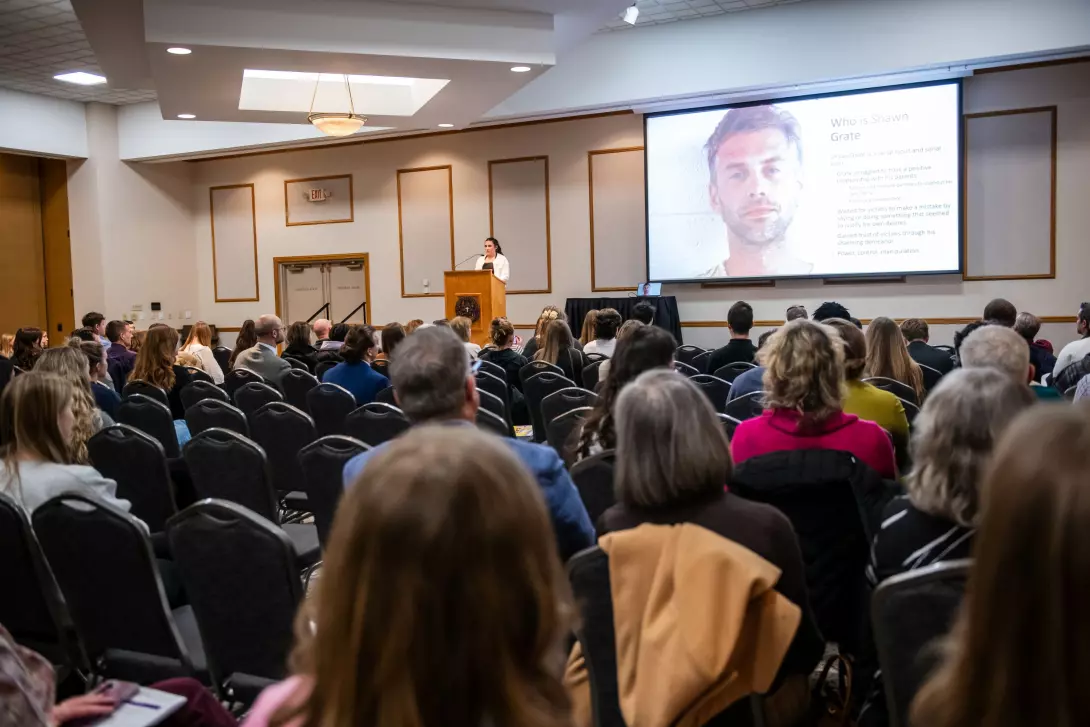
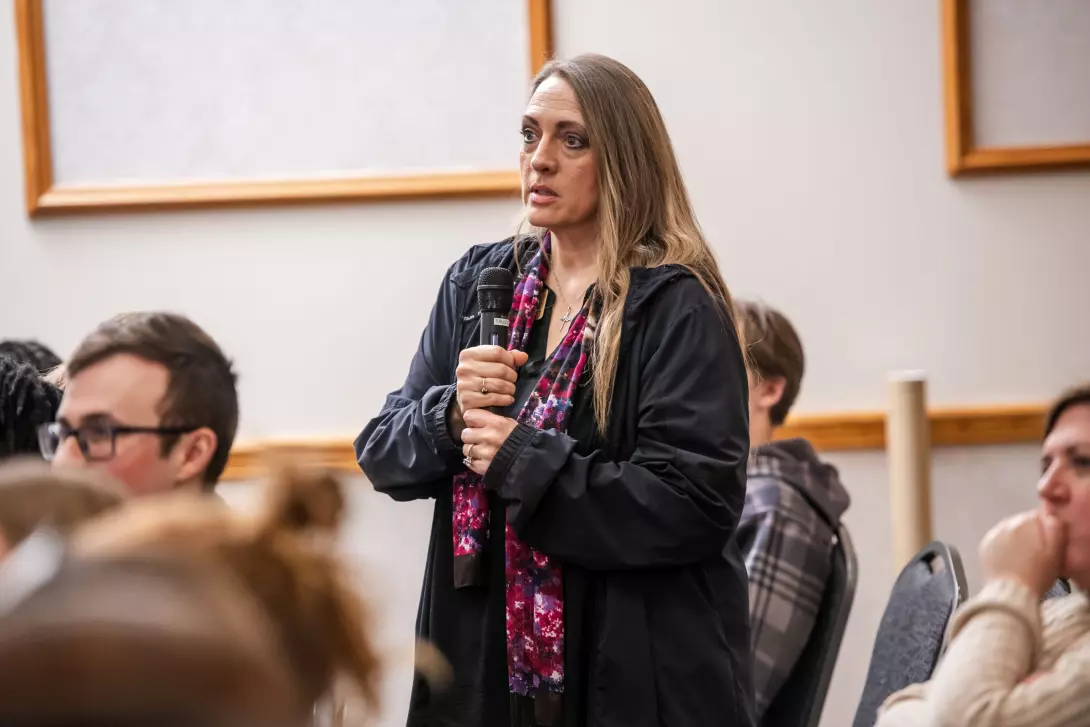
One project this year even included a team of students (Allyson Chapman, Dru Johnson, Kale Miller and Mallorie Norton) from the College of Business & Economics (COBE). They had one of the 28 posters displayed in the alumni room along with Smith’s art exhibit. Their project was: Using Virtual Reality 360-camera for Experiential Learning: A Study Abroad Case Study for Business Students.
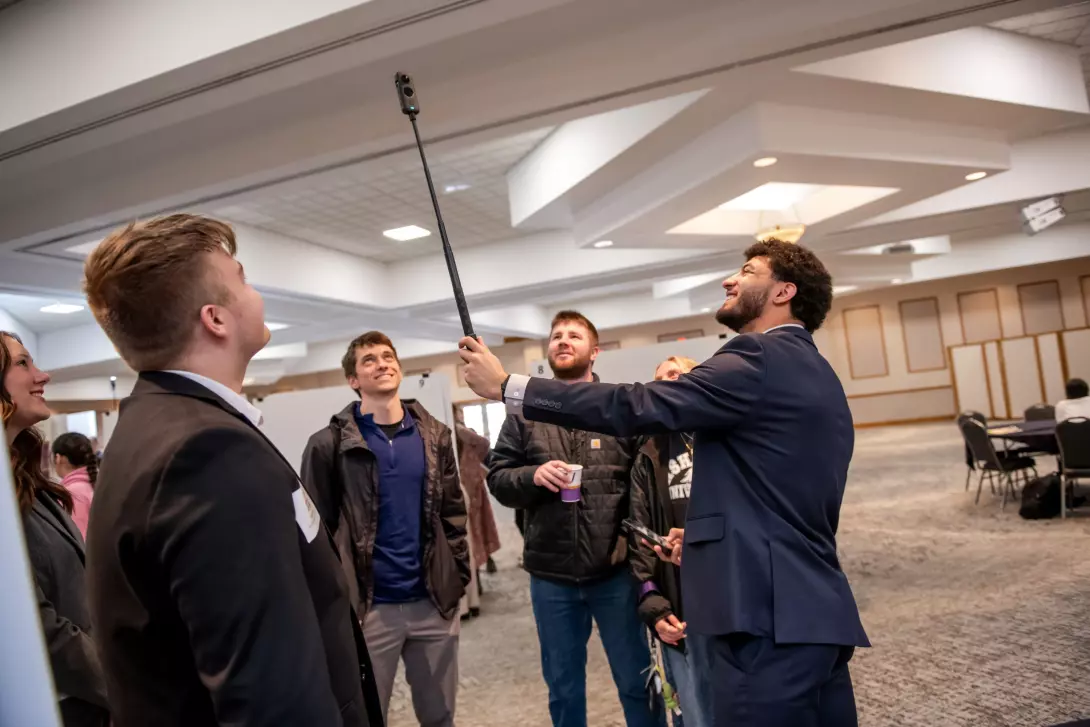
About half of the projects included two to five students and the other half were solo ones.
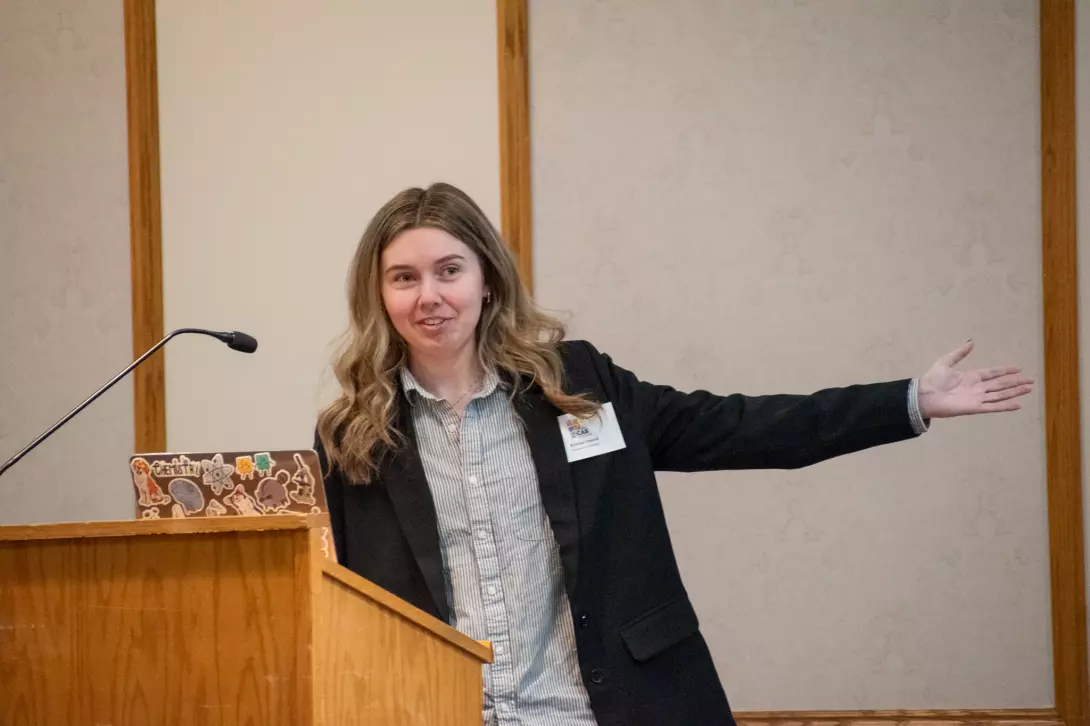
URCA began with oral presentations from AU graduate Kristyn Conrad, a biochemistry Ph.D. student at the University of Missouri, and another Ashland University grad, Allison Lawrentz Barnhart, blending art and genealogy together with Blending Art and Genealogy Together: Exploring Creativity Through Heritage.
